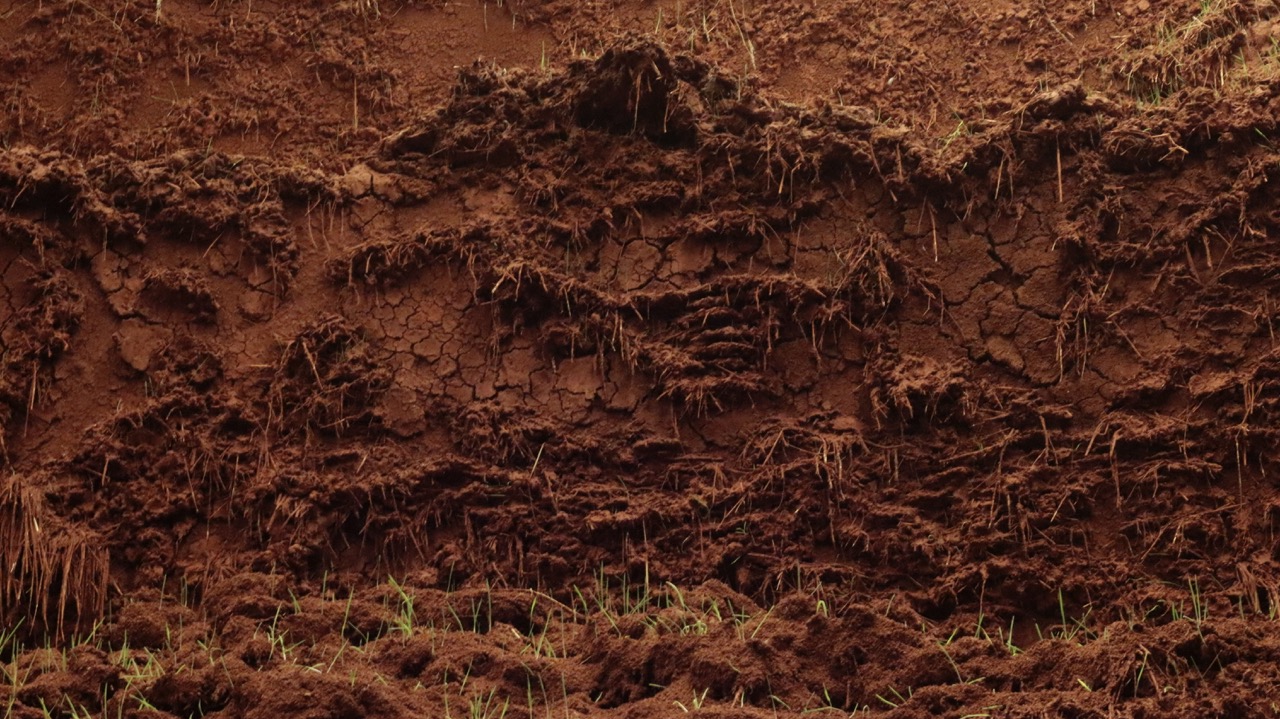
Delcy Morelos
El espacio vientre
Exhibition
-> Oct 18 – Jun 7
Delcy Morelos presents El espacio vientre at the MUAC, a commissioned work for Gallery 9 of the museum.
Morelos is one of the most renowned Colombian artists on the international scene.
The multiple references in the work she presents at the university museum draw from the circular structures produced by various pre-Hispanic cultures, but it is particularly linked to the Cuicuilco pyramid and the Espacio Escultórico at UNAM.
Her practice, which began as a pictorial exercise, has expanded into installations and site-specific works that reflect on rootedness and the experience of territory.
Her large-scale installations are created using materials sourced from the places she visits and are configured based on her reading of each exhibition site.
This project inaugurates a new line of commissioned works for Gallery 9 of the museum.
The work of Delcy Morelos (Tierralta, Colombia, 1967), which began as a pictorial exercise grounded in experiences with soil, skin color, and violence in Colombia—and which was initially presented in more or less conventional formats—has expanded into installations and site-specific works that reflect on rootedness and the experience of territory. Her recent work has evolved into volumetric, site-specific interventions—a sort of turn on land art and minimalism. Her large-scale installations are made with materials she collects from the places she visits and are shaped through her interpretation of the exhibition site. The result often engages sight, smell, hearing, and touch, provoking both a sensory and a mystical, transcendent experience in viewers.
El espacio vientre, the project she presents at the Museo Universitario Arte Contemporáneo (MUAC) from October 18, 2025, to June 7, 2026, curated by Alejandra Labastida and Daniel Montero, inaugurates a new line of commissioned works for Gallery 9. Based on several visits the artist made to Mexico City, Oaxaca, and Chiapas, she conceived an installation that occupies the entire room. The work consists of a circular terraced structure that rises to the ceiling, with heights ranging from six to twelve meters.
Rethinking our relationship with the earth
Delcy Morelos has been researching various relationships with the earth, nourishment, magic, and mythologies that have reshaped her understanding of social and natural relations. For her, as for many Indigenous peoples, the earth is a feminine entity—especially in relation to fertility and sustenance. Historically, humans have developed technologies that allow them to establish relationships with this being. These techniques of nourishment depend not only on systems of production and consumption but are grounded in possible relationships between the divine, the magical, the natural, and the social.
Morelos understands the earth as a divinity encompassing the cycles of life and death, but also as one that has always been at the center of cycles of exploitation, war, and violence. For this reason, her works seek to rethink our relationship with the earth, to restore its relevance, and to awaken awe before its vitality.
Inversion of relationships and connections
The multiple references in the work that Delcy Morelos presents in Gallery 9 of the MUAC draw from the circular structures produced by various pre-Hispanic cultures—such as the archaeological site of Caral in Peru, Ciudad Perdida in Colombia, or the Baños de Nezahualcóyotl in the State of Mexico—as well as shaft tombs, land art, minimal art, arte povera, and modern architecture, among others. However, it is particularly connected to the Cuicuilco pyramid and the Espacio Escultórico of UNAM, both located near the MUAC. In this work, Morelos proposes an inversion of the relationships and connections circumscribed within these two structures.
The Espacio Escultórico is a circular construction 120 meters in diameter with 34 triangular prisms. At its center lies volcanic rock from the eruption of the Xitle volcano, and around it extends UNAM’s natural reserve. Morelos’s work establishes a relationship between exterior and interior space through a primarily horizontal tension. Her intention is to invert that relationship toward a vertical tension, alluding to the earth as a womb and the space as a site of maternal protection.
If the Espacio Escultórico refers to a convention of viewing and to a Western mode of experience—operating mainly as a frame for a landscape—the visitor of El espacio vientre ceases to be a spectator and becomes a guest within this place of protection and introspection. Looking upward and inward, the body perceives the magical power of the massive accumulation of earth. Once inside, the spatial and volumetric experience of the work, along with the sensory presence of scents and sonic voids, creates conditions where distance, exteriority, and perspective are no longer available. Morelos is not interested in generating a gaze but in evoking a state—or, in any case, an inner horizon.
A portion of the soil used in this work comes from maize fields, and the scent in the room evokes this cornerstone of local culture. Morelos is not interested in generating a gaze but in evoking a state—or, in any case, an inner horizon.
All materials used in this installation are recycled and will have a subsequent life of use after the exhibition. The earth was taken from the municipality of Otumba in the State of Mexico and will be returned to the same location. The architectural firm ASPJ, with which Delcy Morelos collaborated on this project, specializes in bioconstruction and permaculture.
— MUAC